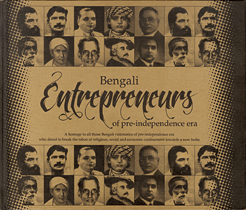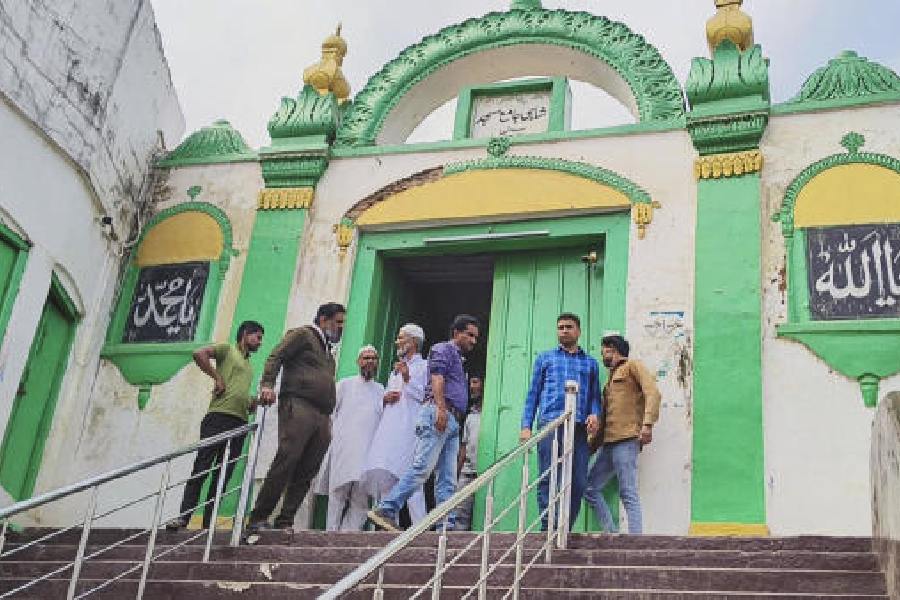 |
| The cover of the diary and (below) a page from the calendar |
Nobody keeps diaries any longer. But diaries are in great demand. For, people have discovered other uses for these wads of bound notepaper which are perfect for taking down notes or keeping accounts.
Cartier has fantastic leather-bound diaries which are quite as chic as their rocks. Business houses are aware of the value of diaries as a new-year gift that one would not throw away readily, and many of these bring them out every year for distribution among select clientele.
Anjali Jewellers has been distributing custom-made diaries made of high-quality paper for the past eight years. These combine information and utility between hardy cardboard covers. These are surprisingly well-designed Calcutta-themed diaries, and old houses, print advertisements of jewellers and pioneering women are some of the topics Anjali Jewellers has explored so far.
This year the theme is Bengali entrepreneurs of the pre-Independence era. To quote a line in the diary: “A homage to all Bengali visionaries of pre-Independence era who dared to break the taboo…” They have chosen a number of men, all of whom are well-known public figures. Although we may know them by name, chances are that we do not know their biographical details and have not seen their photographs either. The diary is packed with information that is well-researched. Besides portraits of each entrepreneur, there are other images related to them, their times and their activities.
 |
The design is clean and since the diary is monochromatic, it looks dignified. The men, whose detailed biographies are presented are Ramdulal De of Chhatubabu Latubabu (they were his two sons) fame, the businessman who traded with the US; Mutty Lal Seal, the multimillionaire who was the first to use steamships for internal trade in Calcutta; Prince Dwarkanath Tagore; Prafulla Chandra Ray; Upendrakishore Ray Chaudhuri; Hemendra Mohan Bose, who recorded Rabindranath’s version of Vande Mataram, began the first Indian-owned cycle works factory, was a pioneer of colour photography in India, and produced perfumes as well; Birendra Nath Sircar of New Theatres; Sir Rajen and Sir Biren Mookerjee; Nishikanta Ghosh of Dwarik’s sweet shop fame; the once-famous jeweller M.B. Sirkar; and Butto Kristo Paul, who produced the nostrum for malaria. There is besides, another section, where lesser-known entrepreneurs are introduced.
Although many depend on their mobile phones for date and time today, calendars are still indispensable in a country like ours, with festivals and holidays on almost every other day. At this time of the year, people go around begging for calendars and diaries. Many love to collect them if they have an interesting theme.
The calendars that artist and photographer Bijoy Chowdhury has been producing for the past eight years are worth collecting. His calendars featuring his own black-and-white photographs are Calcutta-themed.
Bijoy, who works for an ad agency and has won the Commonwealth Photography Award and the National Geographic Traveler Photo Award (2003) has already brought out calendars on bohurupees (mummers) and the Chinese community. This year he presents several shots of Sudder Street, which is a favourite haunt of foreign tourists, and where Rabindranath has written Nirjharer Swapnabhanga. Bijoy’s photographs catch both aspects of this crowded street.










